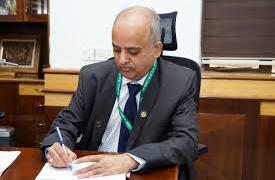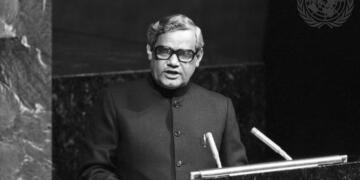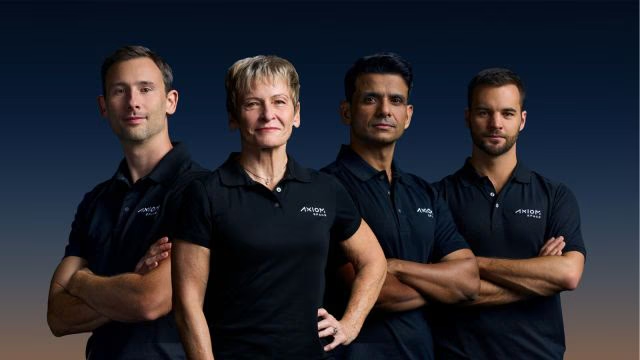After multiple delays, technical glitches, and weather-related setbacks, the much-anticipated Axiom-4 Mission (Ax-4) is finally all set to launch today, marking a major milestone in India’s human spaceflight ambitions. Scheduled to lift off from NASA’s Kennedy Space Center in Florida at 12:01 PM IST on June 25, 2025, the mission will see Indian Air Force Group Captain Shubhanshu Shukla become the first Indian astronaut to pilot a spacecraft. The mission is expected to dock with the International Space Station (ISS) at around 4:30 PM IST on June 26, making it one of the most significant global space events of the year.
Alongside Shukla, the crew includes Commander Peggy Whitson (former NASA astronaut and Director of Human Spaceflight at Axiom Space), ESA astronaut Slawosz Uznański-Wiśniewski from Poland, and Hungarian astronaut Tibor Kapu. The 14-day mission is being conducted by Axiom Space, in collaboration with NASA, ISRO, SpaceX, and the European Space Agency.
Why the Mission Was Delayed: Technical Hurdles and Safety Priorities
Originally scheduled for launch on June 8, the Ax-4 mission faced a series of delays. The first came due to inclement weather at the launch site in Florida. Just as conditions began to improve, a new challenge emerged: a leak of liquid oxygen (LOx) was detected in the Falcon 9 rocket during final tests. This prompted immediate safety checks and postponement. Later, additional concerns emerged over the Russian Zvezda service module on the ISS, further stalling the mission.
NASA and Roscosmos engineers coordinated closely to ensure the integrity of the docking module, reflecting the deep international cooperation that underpins the ISS. Only after a joint technical resolution and thorough vetting did NASA greenlight the mission for June 25. According to SpaceX, all systems are now go, and weather conditions are 90% favorable for launch.
Mission Mandate: Science, Innovation, and Global Collaboration
The Ax-4 mission is designed to be a pathbreaking scientific and commercial endeavor. The astronauts will spend two weeks aboard the ISS, conducting over 60 research experiments contributed by 31 countries, including India, Saudi Arabia, Brazil, Nigeria, UAE, Poland, and the US. Seven of these experiments will be led by Gp Capt Shubhanshu Shukla, focusing on microgravity, human physiology, microbial behavior, and even space agriculture.
The mission will also study Tardigrades micro-animals known for their resilience to understand their survival in extreme environments. These findings may pave the way for enhanced human resistance to radiation and stress during long-term space travel. Other research will include investigations into immune system responses, muscle and bone loss in space, and the viability of growing crops aboard spacecraft.
India’s Big Leap: How Ax-4 Supports Gaganyaan Mission
For India, the Ax-4 mission is more than just a symbolic achievement. It offers ISRO critical hands-on experience ahead of its flagship Gaganyaan mission scheduled for 2027. As the pilot of the Ax-4 mission, Shukla’s performance will provide vital data on crew training, in-orbit operations, spacecraft docking, and re-entry procedures.
Gp Capt Shukla, along with his fellow astronauts Gp Capt Prashanth Balakrishnan Nair, Gp Capt Ajit Krishnan, and Gp Capt Angad Prathap, have been undergoing intensive astronaut training under the Gaganyaan programme. The Ax-4 mission will help validate ISRO’s own preparations by aligning with international protocols and offering insights from real-time human spaceflight conditions.
Additionally, previous ISRO missions like POEM-4 and SpaDeX have laid the groundwork for such advancements. POEM-4 saw cowpea seeds sprout in microgravity, while SpaDeX tested spacecraft docking and undocking systems capabilities that Shukla will demonstrate aboard the ISS.
Giant Step for Indian Human Spaceflight
The Ax-4 mission represents a significant step in India’s journey towards establishing itself as a serious player in the global human spaceflight domain. As Shubhanshu Shukla prepares to become India’s first astronaut to pilot a space mission, the country not only celebrates a national milestone but also deepens its integration into global space science and diplomacy.
From collaborative experiments to hands-on exposure for ISRO’s future astronauts, the benefits of the mission are manifold. With Gaganyaan on the horizon and private-public partnerships flourishing, India’s space odyssey is reaching new orbits of ambition and achievement.
As the SpaceX Dragon lifts off today, it carries not just four astronauts but the aspirations of a billion Indians eager to see their nation among the stars.































